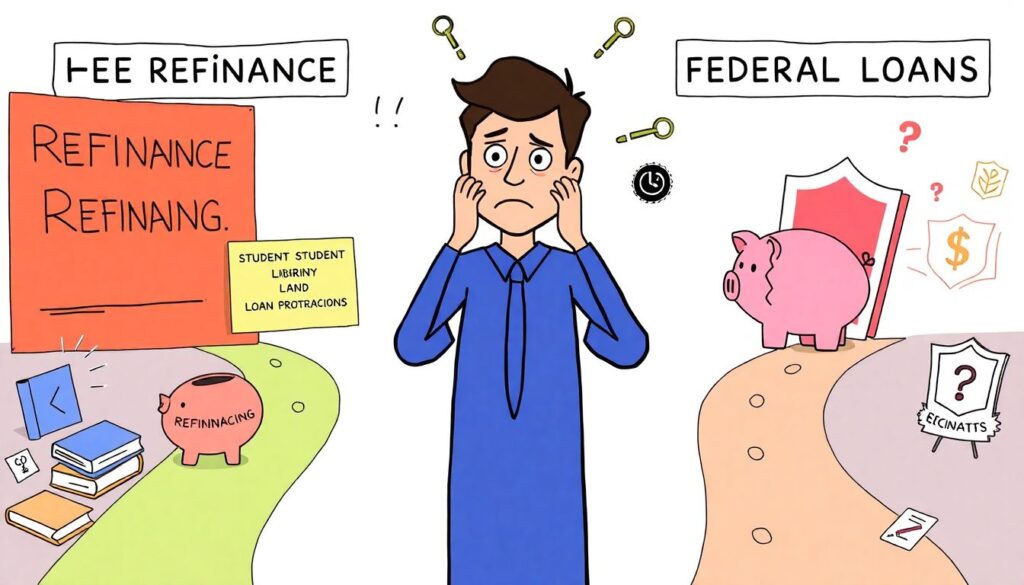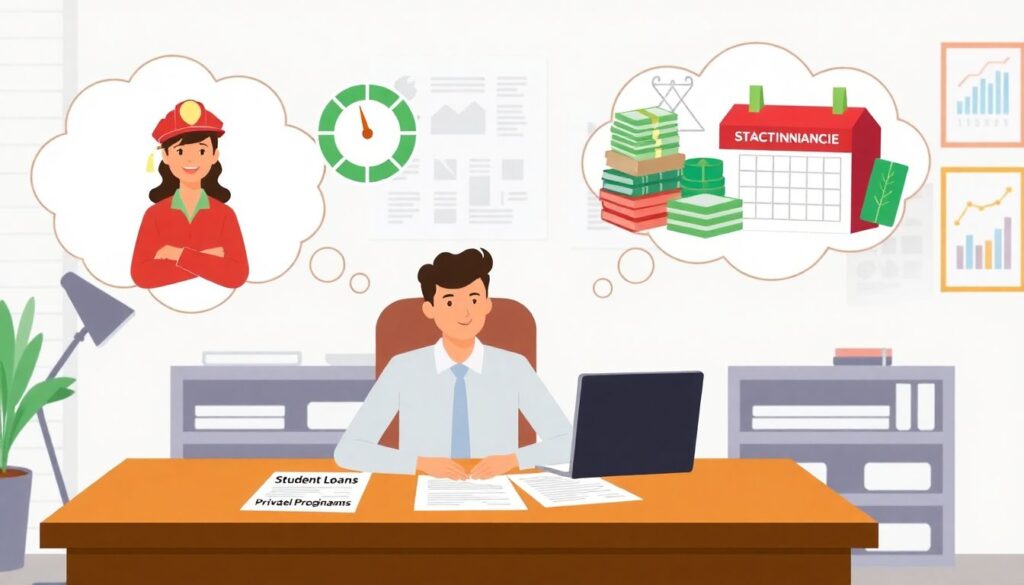Historical Background of Student Loan Refinancing
Student loan refinancing emerged as a financial tool in the early 2000s, gaining momentum as higher education costs surged and borrowers sought relief from rising interest rates. Originally limited to private loan consolidation, the refinancing market expanded significantly after the 2008 financial crisis. Banks and credit unions began offering more customized refinance solutions, especially to borrowers with strong credit profiles. The federal government’s student loan programs, while offering income-driven repayment and forgiveness options, do not directly participate in refinancing, which remains the domain of private lenders. This historical context is crucial to understanding the pros and cons of refinancing in today’s complex lending environment.
Core Principles of Student Loan Refinancing
At its core, student loan refinancing involves taking out a new loan from a private lender to pay off existing student debt—either federal, private, or both. The primary aim is to secure a lower interest rate, reduce monthly payments, or shorten the loan term. Approval typically depends on creditworthiness, income stability, and debt-to-income ratio. Unlike federal consolidation, which simply combines federal loans without lowering interest rates, refinancing can potentially lead to significant interest savings. However, refinancing federal loans with a private lender forfeits access to federal protections, such as income-driven repayment plans and loan forgiveness programs.
Practical Examples of Refinancing in Action
Refinancing can be particularly effective for borrowers who have improved their financial standing since graduation. For instance, a medical professional with high student loan debt may refinance at a significantly lower interest rate after completing residency and securing a stable income. Similarly, an MBA graduate working in finance might refinance private loans to save on interest over the loan term. In contrast, a public school teacher with federal loans might find refinancing less beneficial due to the potential loss of Public Service Loan Forgiveness (PSLF) eligibility. These scenarios illustrate that refinancing is not a one-size-fits-all solution and must be assessed individually.
Key Advantages of Student Loan Refinancing
When applied strategically, refinancing offers several practical benefits:
– Lower Interest Rates: Qualified borrowers may reduce the cost of their loans by securing a lower fixed or variable rate.
– Simplified Payments: Refinancing can consolidate multiple loans into one, streamlining monthly management.
– Shortened Loan Term: Accelerated repayment can reduce total interest paid and eliminate debt faster.
These advantages are most impactful for borrowers with high-interest private loans or those who have achieved better credit and financial health since taking out their original loans.
Potential Drawbacks and Risks
Despite its appeal, student loan refinancing carries notable risks:
– Loss of Federal Benefits: Refinancing federal loans with a private lender eliminates access to income-driven repayment, forbearance, and forgiveness programs.
– Stricter Eligibility Requirements: Private lenders typically impose credit, income, and employment standards, making refinancing inaccessible to some borrowers.
– Variable Rate Exposure: Opting for a variable rate loan can lead to higher payments if interest rates rise over time.
Understanding these trade-offs is essential before committing to a refinancing decision, particularly for those with uncertain career paths or limited emergency savings.
Common Misconceptions about Refinancing

Many borrowers misunderstand the implications of refinancing, often due to marketing promises or lack of financial literacy. One prevalent myth is that refinancing always saves money—while it can, those with federal loans may lose valuable protections that outweigh interest savings. Another misconception is that refinancing is irreversible; while technically true, reverting to federal loans after refinancing is not possible, making the decision permanent. Lastly, some believe refinancing is only for high-income earners. While income does influence eligibility, some lenders offer options for mid-income professionals with strong credit histories.
Summary of Key Considerations

Before refinancing student loans, it’s important to evaluate both financial and personal factors:
– Assess Long-Term Career Plans: Public service employees may benefit more from federal programs than from private refinancing.
– Evaluate Financial Stability: A high credit score and consistent income are essential for securing favorable refinancing terms.
– Compare Offers from Multiple Lenders: Interest rates, repayment terms, and borrower protections vary widely across lenders.
Ultimately, student loan refinancing can be a powerful financial strategy—but only when applied judiciously. Understanding both the benefits and limitations ensures borrowers make informed decisions aligned with their long-term goals.

